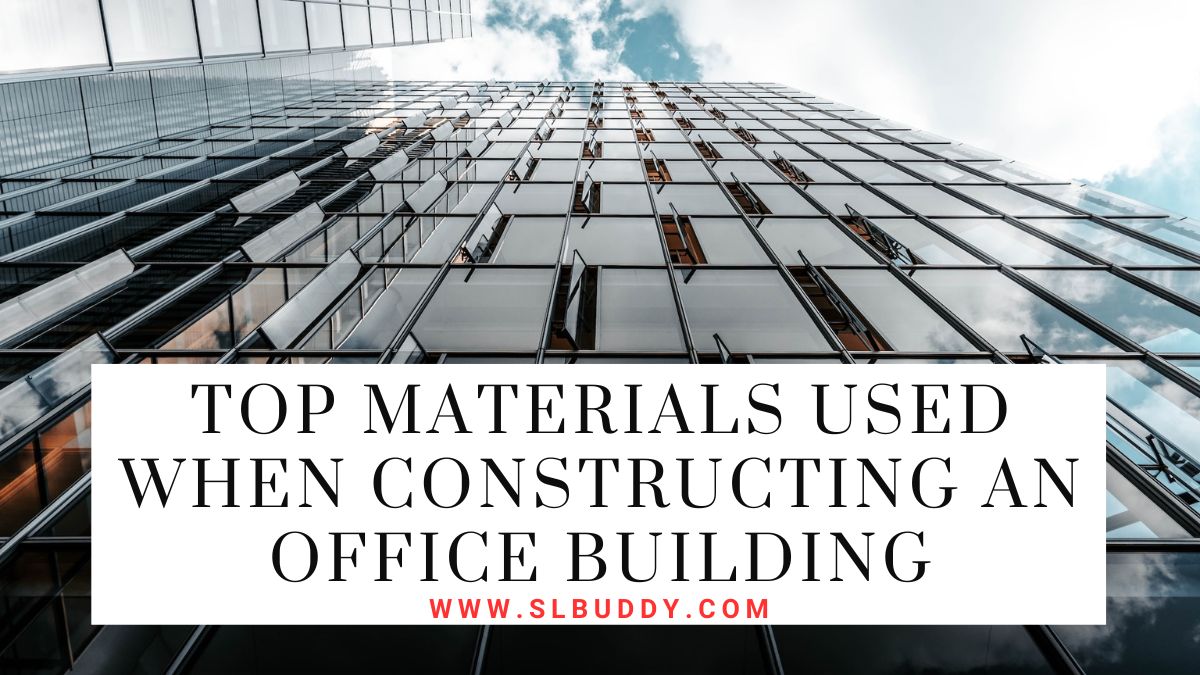
Have you ever wondered what materials are used in the process of constructing an office building? It’s a complex job that involves many different components and requires careful consideration of each component in order to build a sturdy, safe structure.
From the foundation to the rafters, there is much more than meets the eye when it comes to assembling an office building.
In this blog post, we will delve into some of the top materials used during modern construction projects for office buildings.
We’ll explore why certain materials are chosen over others and how they contribute to creating an aesthetically pleasing yet cost-effective outcome.
So if you’re curious about what goes into constructing your favorite workplace or want to know more about commercial construction procedures overall, read on!
Essential Building Materials
When it comes to building the structures we live and work in, the materials used are crucial in ensuring safety and longevity.
Steel, concrete, and wood are three essential building materials that have been used for centuries.
Steel, with its high strength and durability, is often used in the construction of large skyscrapers and bridges.
Concrete, a mixture of cement, water, and aggregates, is commonly used for its ability to resist compression and provide a strong foundation.
Wood, on the other hand, is often chosen for its natural beauty and versatility, with many architects and builders opting for it in residential and commercial spaces.
Each of these materials has its own unique benefits, and when combined, they provide a solid foundation for strong and sustainable buildings.
Advantages of Using Steel for Office Construction
Steel is an increasingly popular choice for office construction, and for good reason. One major advantage is its strength and durability.
Steel buildings can withstand extreme weather conditions, making them a reliable option in areas prone to natural disasters.
Additionally, steel is fire-resistant, reducing the risk of damage or loss of property in case of a fire. On top of that, steel is a sustainable material that can be recycled and reused, making it an eco-friendly choice.
Finally, steel construction is known for its efficiency and speed. Prefabricated steel components can be manufactured off-site and easily assembled on-site, minimizing construction time and lowering costs.
The advantages of using steel for office construction go beyond just the durability and sustainability of the material, offering practical benefits in terms of efficiency and speed as well. Various steel producers continue to improve the material, making it even more reliable and cost-effective.
Plus, architects and designers can get creative with the design possibilities that steel affords.
Benefits of Utilizing Concrete in Buildings
Concrete is an incredibly versatile material that has been utilized in construction for centuries. It offers a wide variety of benefits to those who choose to use it in their buildings.
For starters, concrete is extremely strong and durable, making it a great choice for structures that need to withstand heavy loads.
Additionally, it has excellent thermal mass properties, which can help regulate the temperature of a building and reduce energy costs.
Furthermore, concrete is fire-resistant and can protect a building from the destructive effects of flames and smoke.
Finally, with advances in technology, concrete can be made in a wide variety of colors and finishes, making it a stylish and attractive choice for modern buildings.
With all of these benefits, it’s easy to see why so many architects and builders continue to rely on concrete in their projects.
Considerations When Choosing Wood for Structural Support
Choosing the right wood for a structural support system is a vital decision that should be carefully considered.
There are many factors to weigh when selecting the type of wood to use.
Some of the most important considerations include the weight-bearing capacity, moisture content, resistance to decay and pests, and durability of the wood.
An experienced engineer or contractor should be consulted to make an informed decision that will ensure the safety and longevity of the structure.
With proper treatment and maintenance, wood can be a sustainable and cost-effective option for structural support in an office building.
Not only can wood be used as a structural material, but it also has a wide range of uses in office interiors.
While wood offers numerous benefits for office interiors and structural support, expanding the scope to include other materials can further enhance the functionality and sustainability of an office building. In particular, exploring structural concrete solutions for manufacturing facilities within the same complex can offer unparalleled durability and load-bearing capacity.
This approach not only complements the natural aesthetics and environmental benefits of wood but also ensures that the building can withstand the demanding requirements of industrial operations.
From flooring and wall paneling to desks and furniture, wood adds warmth and elegance to any office space.
Plus, with its ability to be sourced from renewable forests, using wood in office construction is an environmentally responsible choice.
Flexible Options for Design Aesthetics with Aluminum and Glass
While steel, concrete, and wood are often the top choices for structural support in office buildings, there are other materials that play a significant role in the overall design.
Aluminum and glass are two materials commonly used to create modern, sleek structures that stand out in city skylines.
Aluminum is lightweight yet incredibly strong, making it an ideal material for window frames, curtain walls, and other exterior elements.
It also has a high resistance to corrosion, making it a durable option for long-term use.
Glass is also widely used in office building construction, providing natural light and giving the illusion of more space.
With modern advancements, there are now energy-efficient glass options that can help regulate temperature and save on energy costs.
Innovative Insulation Solutions
With the ever-increasing concerns of climate change and energy efficiency, architects and engineers are constantly seeking innovative insulation solutions for improved building performance.
From green roofs to recycled insulation materials, the market is flooded with options that promise to reduce energy consumption while improving indoor comfort.
Innovative insulation solutions not only save energy but also enhance the overall building performance by reducing moisture intrusion, enhancing soundproofing capabilities, and improving indoor air quality.
Whether you are looking to renovate an existing structure or build a new sustainable development, selecting the right insulation system can result in significant cost savings, increased durability, and a healthier environment.
Investing in the latest insulation technologies is not only a smart choice, but an essential one in today’s world.
Don’t miss: The Best Ways to Get a Loan for Home Improvement
The bottom line
The construction of an office building involves a multitude of complex considerations, each of which contributes to the final outcome’s functionality, sustainability, and aesthetic appeal.
The selection of the right materials, including steel, concrete, wood, aluminum, and glass, plays a pivotal role in determining the durability, safety, and visual appeal of the structure.
Furthermore, with the increasing emphasis on environmental sustainability and energy efficiency, integrating innovative insulation solutions is no longer a luxury but a necessity.
Therefore, a balance between material selection, design aesthetics, and energy efficiency is indispensable for creating office buildings that are not just structures, but a testament to human ingenuity and architectural excellence.














